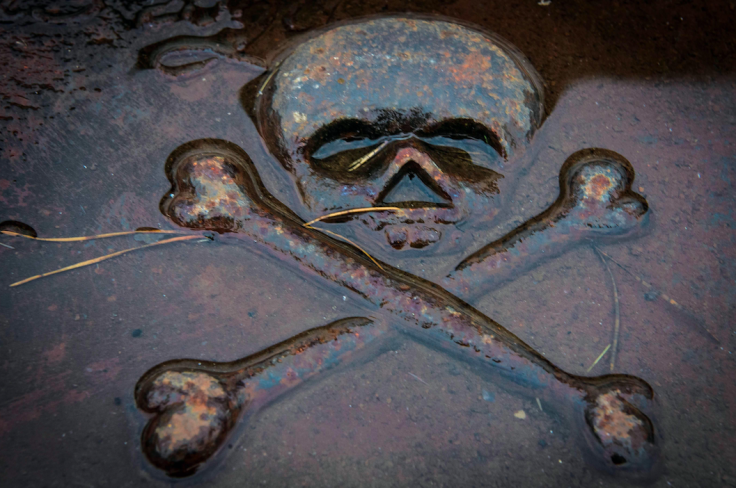1550-Year-Old 'Vampire Burial' Of Child Discovered In Ancient Cemetery

A 1,550-year-old "vampire burial" of a child was discovered in an ancient cemetery in Lugnano, Italy. The unusual way of burial, with a rock stuffed into the child's mouth, was presumably done to stop him or her from rising from the dead.
The child, whose sex remains unknown, has been dubbed the “Vampire of Lugnano” because it had a stone in its mouth. It is believed the child died of malaria and the rock was used to prevent the spread of the disease. The child’s burial was one of five uncovered at the cemetery over the summer.
"I've never seen anything like it. It's extremely eerie and weird," David Soren, an anthropology professor at the University of Arizona (UA), who has overseen archaeological excavations at the cemetery since 1987, said.
The discovery was made at La Necropoli dei Bambini, or the Cemetery of the Babies, which dated to the mid-fifth century when a deadly malaria outbreak killed many vulnerable babies and small children.
Until now, archaeologists believed the cemetery was designated specifically for infants, toddlers and unborn fetuses. The discovery of the 10-year-old, whose age was determined based on dental development, suggested the cemetery may have been used for older children as well, bioarcheologist Jordan Wilson said.
“This is very unusual mortuary treatment that you see in various forms in different cultures, especially in the Roman world, that could indicate there was a fear that this person might come back from the dead and try to spread disease to the living.”
"There are still sections of the cemetery that we haven't excavated yet, so we don't know if we'll find other older kids," Wilson said.
Excavation director David Pickel, who has a master's degree in classical archaeology from the UA, said the discovery has the potential to tell researchers much more about the devastating malaria epidemic that hit Umbria region in Italy.
"Given the age of this child and its unique deposition, with the stone placed within his or her mouth, it represents, at the moment, an anomaly within an already abnormal cemetery," Pickel said. "This just further highlights how unique the infant — or now, rather, child — cemetery at Lugnano is."
In previous excavations, archeologist found other bizarre remains at this cemetery, including the skeletons of babies and toddlers found buried beside raven talons, toad bones and bronze cauldrons filled with the remains of sacrificed puppies.
In one case, the skeleton of a 3-year-old girl at the cemetery was found with stones holding down her hands and feet, the researchers said.
Archaeologists said they will return to Lugnano next summer to complete excavations of the cemetery.
"It's a very human thing to have complicated feelings about the dead and wonder if that's really the end," Wilson said. "Anytime you can look at burials, they're significant because they provide a window into ancient minds. We have a saying in bioarchaeology: 'The dead don’t bury themselves.' We can tell a lot about people's beliefs and hopes and by the way they treat the dead."
© Copyright IBTimes 2025. All rights reserved.





















